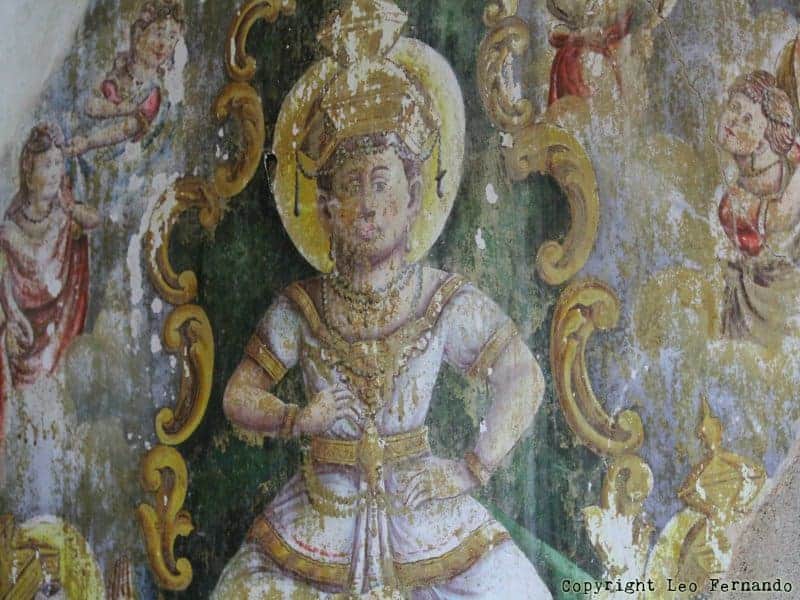One of the best-known accessible temples in the area of the Western Province, more specifically over at Gampaha, is the Warana Rajamaha Viharaya, named of course, after the little village of Warana in its vicinity. In fact, it is hardly one and a half hours away from Colombo, a surprising distance for an ancient rock temple. The temple itself is surrounded by verdant hills in the distance, obviously the beginnings of the central mountains of the island, and wonderfully thick vegetation that give us a clue of how the place actually got its name. It may be indeed a combination of “Va” and “Arana”. The former is probably a tree unknown to us today while the latter means forest. Another meaning tells of an elephant since the grooves of the rock resemble pachyderm wrinkles and “Warana” is another name for this animal.
Whatever the etymology, it is certainly a wonderfully relaxing location and you could easily forget your presence in the Western Province when you’re here.
The history of the Warana Rajamaha Viharaya dates back to the 3rd Century BC, to King Devanampiyatissa, the first Buddhist monarch of the island.
He is said to have constructed the place first as a meditation center. There are letters in the Asokan script that tell us that it was dedicated to the first pupil of Mahinda Thero, the Buddhist missionary who brought the doctrine to Sri Lanka. Later kings also added to it, thus explaining the more obviously post-Medieval architecture of the place. During the Kingdom of Kotte, Parakramabahu VI contributed to it, as well as earlier monarchs like Nissankamalla and Valagamba. King Valagamba, during the 1st Century BC, was on the run from South Indian invaders and hid here for a while.
This king built a Buddha image in the largest cave here and turned it into a shrine room. Parakrmabahu VI built a shrine for the god Vishnu, a Bodhisattva, and a number of Buddha statues, also having the inner walls of the cave painted with scenes from the Jataka stories. The eighteen-foot-long image of a reclining Buddha was also constructed under his sponsorship and both he and the queen occasionally made trips to offer their respects.
However during the era of Sitawaka, King Rajasinghe I persecuted Buddhist monks, being a Hindu and the Warana Rajamaha Viharaya fell upon dark days, only to be rejuvenated during the Kingdom of Kandy, during the beginning of the British period. Irrespective of the kings that were added and removed from this temple, it is composed of three levels.
The entrance building of Warana Rajamaha Viharaya is a white structure, not built in the structure of most other ornamental gateways with the traditional makara and demon guardian images but instead more simply, in a distinctly post-Medieval style, seemingly Kandyan. Next to the longhouse-like preaching hall, or dharma shalawa, there is a small white stupa nestled in a niche between a pair of angled rocks. The monks’ dwelling place itself is a grand structure, painted in white with impressive tiled roofs, with a large rocky outcrop in the background. The second level is accessible via a staircase of fifty steps. You will be greeted by a lotus-filled pond upon reaching this area and for those who’d like to explore further, there is a tiny stupa of eight hundred years and a painted cave shrine-the roof in particular has some marvelous floral designs- with a number of Buddha images in various poses. A hundred and fifty steps higher and we reach the top level, where a larger stupa overlooks the countryside from its hilltop perch.
Written by Vasika Udurawane for Travel Lanka Compass



0 Comment